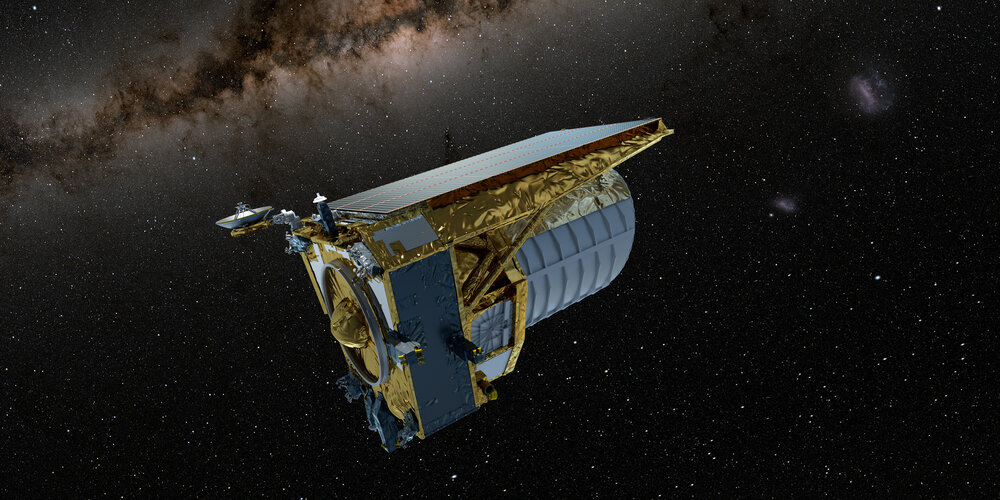Brand-new plan to decontaminate Euclid from 1.5 million km away
“A complex mission requires a united response from teams across Europe, and I'm incredibly thankful for the effort and skill that so many have poured into this,” says Ralf Kohley, Euclid Instrument Operations Scientist who coordinated the response.
“It took work from teams at ESA's ESTEC technical heart in the Netherlands, the ESAC science operations centre in Madrid and the Flight Control Team at ESOC mission control in Darmstadt – but we couldn't have done it without the Euclid consortium and the critical inputs we got from spacecraft prime contractor Thales Alenia Space and its industrial partner Airbus Space.”
The easiest option would be to use the decontamination procedure developed well before launch and heat the entire spacecraft. Teams at mission control would send the commands to turn on every onboard heater for several days, slowly increasing temperatures from about –140 °C to, in some parts of the spacecraft, a ‘balmy’ –3°C.
Doing this would clean the optics but would also heat the entire mechanical structure of the spacecraft. As most materials heat, they expand and don’t necessarily return to precisely the same state after a week-long cool-down, meaning a potentially subtle difference in Euclid’s optical alignment. This won’t do for such a sensitive mission where effects can be noticed on the optics from a temperature change of just a fraction of a degree, requiring at least several weeks of fine recalibration.
“Most other space missions don’t have such demanding requirements on ‘thermo-optical stability’ as Euclid,” explains Andreas Rudolph, Euclid Flight Director at ESA's mission control.
“To fulfil Euclid’s scientific goals of making a 3D map of the Universe by observing billions of galaxies out to 10 billion light-years, across more than a third of the sky, means we have to keep the mission incredibly stable – and that includes its temperature. Switching on the heaters in the payload module therefore needs to be done with extreme care.”
To limit thermal changes, the team will begin by individually heating low-risk optical parts of the spacecraft, located in areas where water released is unlikely to contaminate other instruments or optics. They will start with two of Euclid’s mirrors that can be warmed up independently. If the loss in light persists and starts to have an impact on science, they will continue to warm up other groups of Euclid’s mirrors, checking each time what percentage of photons they get back.
Small amounts of water will continue to be released within Euclid over the life of the mission, so a long-term solution is needed to regularly de-ice its optics without taking up too much precious mission time – Euclid has six years to complete its survey.
"VIS will be measuring weak gravitational lensing – how matter in the Universe has bunched together under the influence of gravity as the Universe expands – and to understand this, the more galaxies we observe, the better,” explains Reiko Nakajima, VIS instrument scientist.
"De-icing should restore and preserve Euclid's ability to collect light from these ancient galaxies, but it’s the first time we're doing this procedure. We have very good guesses about which surface the ice is sticking to, but we won't be sure until we do it.”
Mischa concludes, “Once we have isolated the affected area, the hope is that we can then simply warm up this isolated part of the spacecraft in the future as needed. What we are doing is very complex and fine-grained, so that we can save valuable time in the future – I’m extremely excited to find out just where this water ice is accumulating, and how well our plan will work.”
Despite how common this contamination issue is for spacecraft operating in cold conditions, there is surprisingly little published research about precisely how ice forms on optical mirrors and its impact on observations. Not only could Euclid reveal the nature of dark matter, but it could also shed light on an issue that has long plagued our roving eyes in space, peering down at Earth and out across the Universe.



